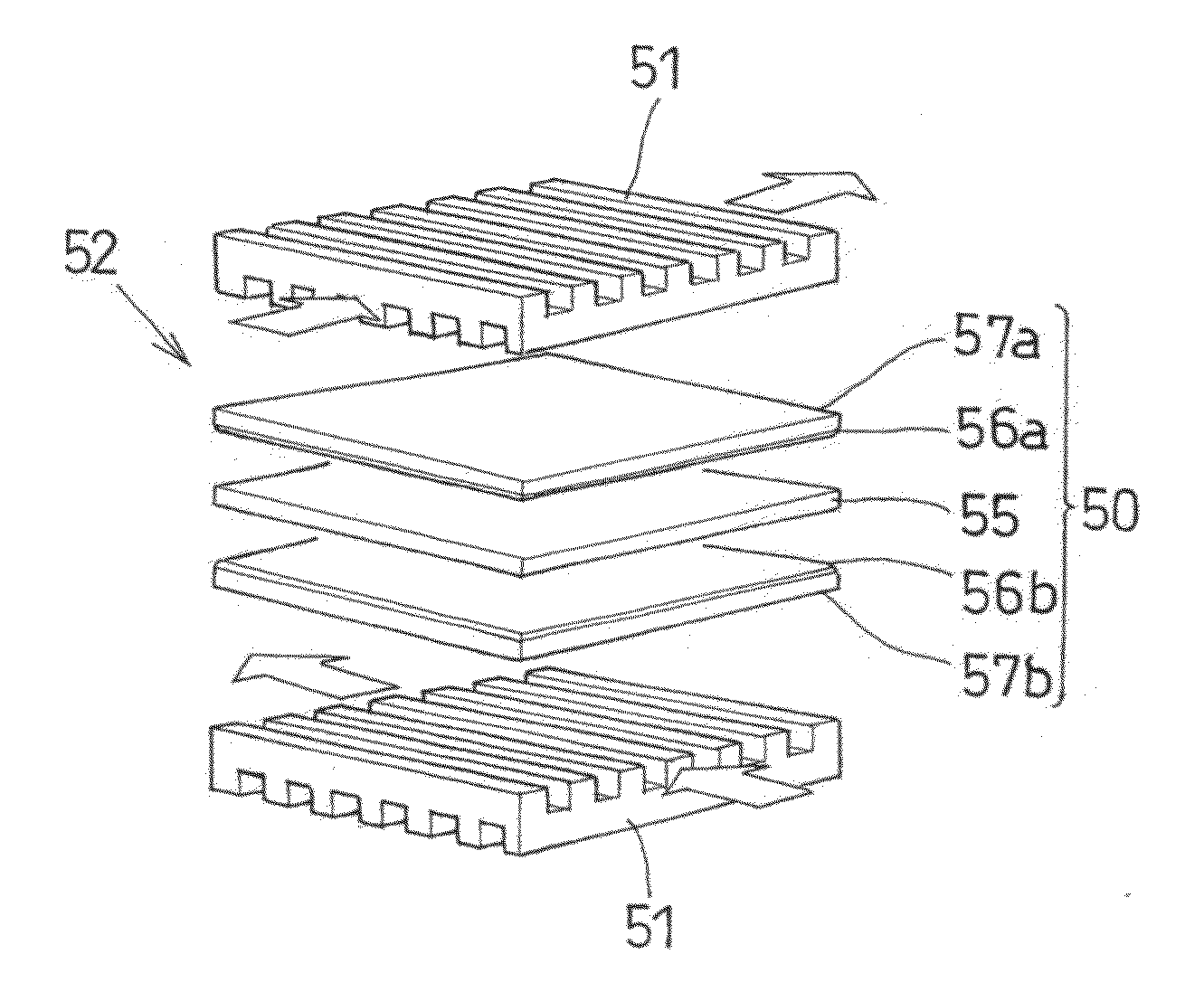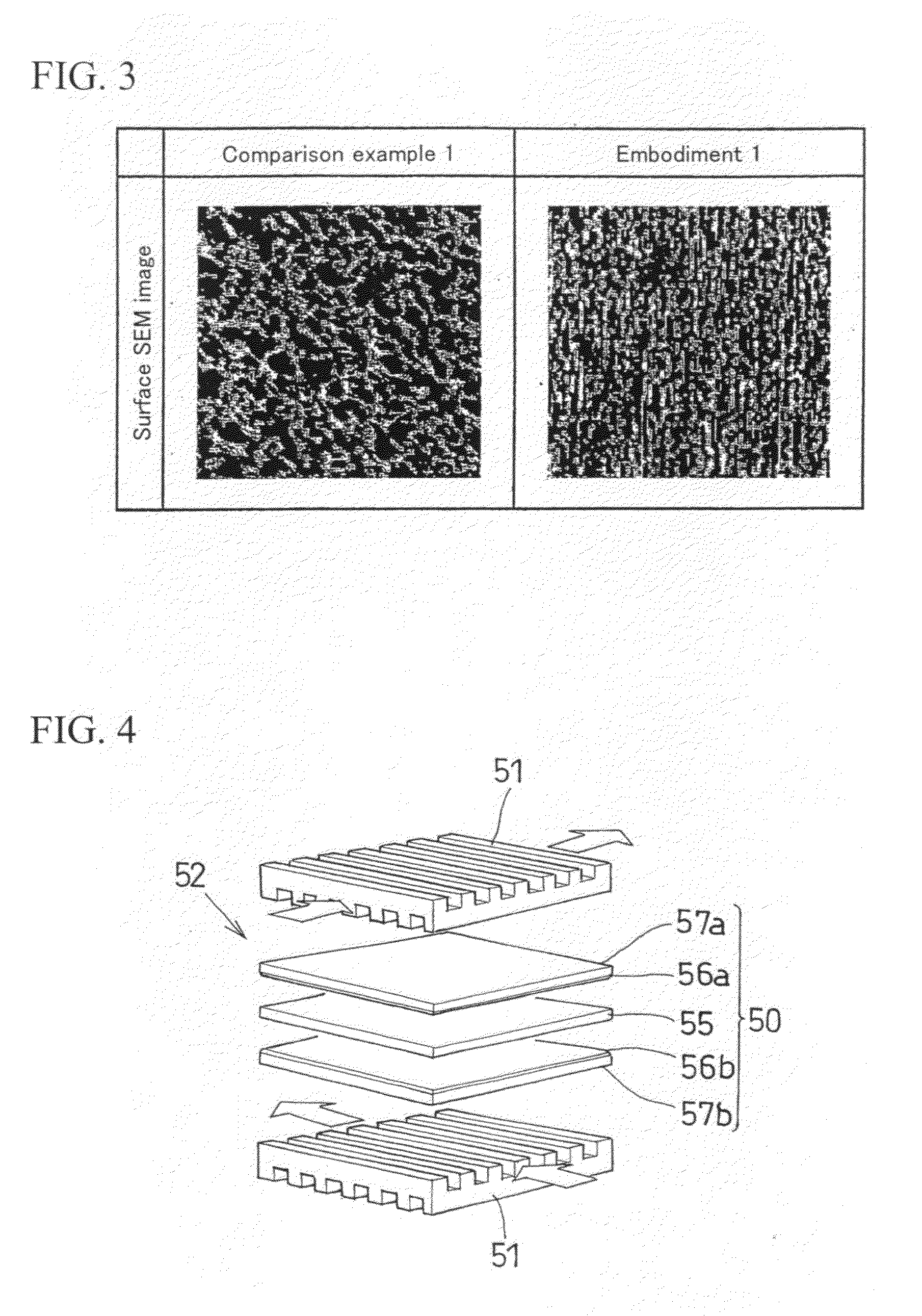Porous membrane for fuel cell electrolyte membrane and method for manufacturing the same
a fuel cell electrolyte and porous membrane technology, applied in the field of porous membrane for fuel cell electrolyte membrane and membrane electrode assembly, can solve the problems of large strength anisotropy to be generated in the orthogonal two directions, inability to obtain sufficient strength by the perfluorosulfonic acid polymer itself, and difficulty in eliminating strength anisotropy, etc., to achieve high power generation performance, high strength, and high strength
- Summary
- Abstract
- Description
- Claims
- Application Information
AI Technical Summary
Benefits of technology
Problems solved by technology
Method used
Image
Examples
embodiment
After a process of uniformly dispersing naphtha as a liquid lubricant in a fine powder of polytetrafluoroethylene (PTFE) and of preforming the obtained mixture, a round bar-like bead was obtained by subjecting the preformed mixture to paste extrusion. A long-sized unbaked tape was formed by making the bead be rolled between a pair of metallic rolling rolls. A fibril-like polytetrafluoroethylene resin porous sheet having a thickness of 7 μm was obtained by uniaxially and highly orienting (highly stretching) the tape (with stretching ratio of 10).
Two sheets having a size of 100 mm×100 mm were cut out from the obtained porous resin sheet, and were laminated so that the stretched directions are made to orthogonally cross each other. In laminating the sheets, the lamination interface between the sheets was coated by spraying a polytetrafluoroethylene suspension. The laminated sheets were heated at 360° C., so as to be integrally heat fused. As a result, a porous membrane for an electroly...
PUM
| Property | Measurement | Unit |
|---|---|---|
| thickness | aaaaa | aaaaa |
| size | aaaaa | aaaaa |
| thickness | aaaaa | aaaaa |
Abstract
Description
Claims
Application Information
 Login to view more
Login to view more - R&D Engineer
- R&D Manager
- IP Professional
- Industry Leading Data Capabilities
- Powerful AI technology
- Patent DNA Extraction
Browse by: Latest US Patents, China's latest patents, Technical Efficacy Thesaurus, Application Domain, Technology Topic.
© 2024 PatSnap. All rights reserved.Legal|Privacy policy|Modern Slavery Act Transparency Statement|Sitemap



